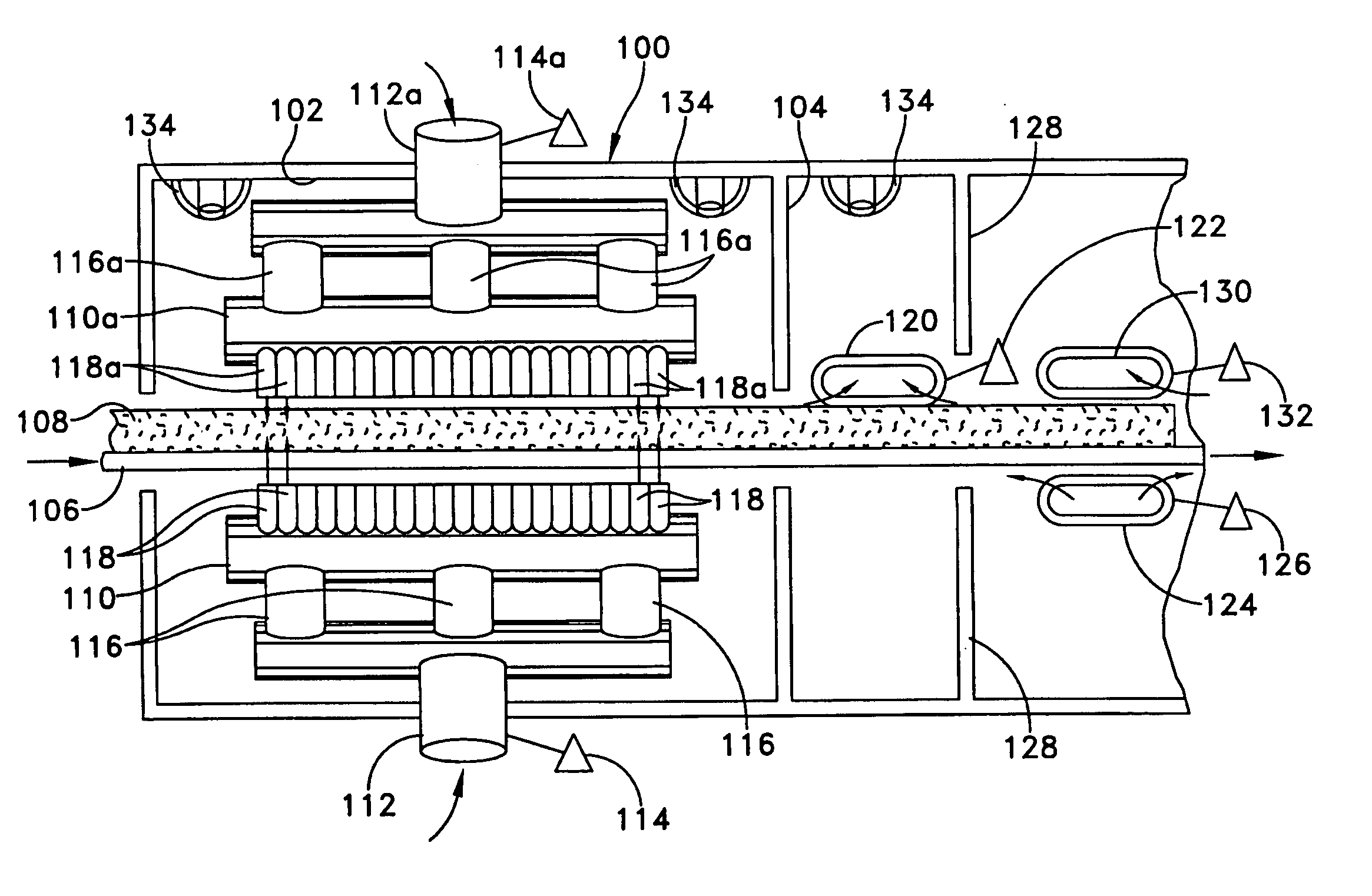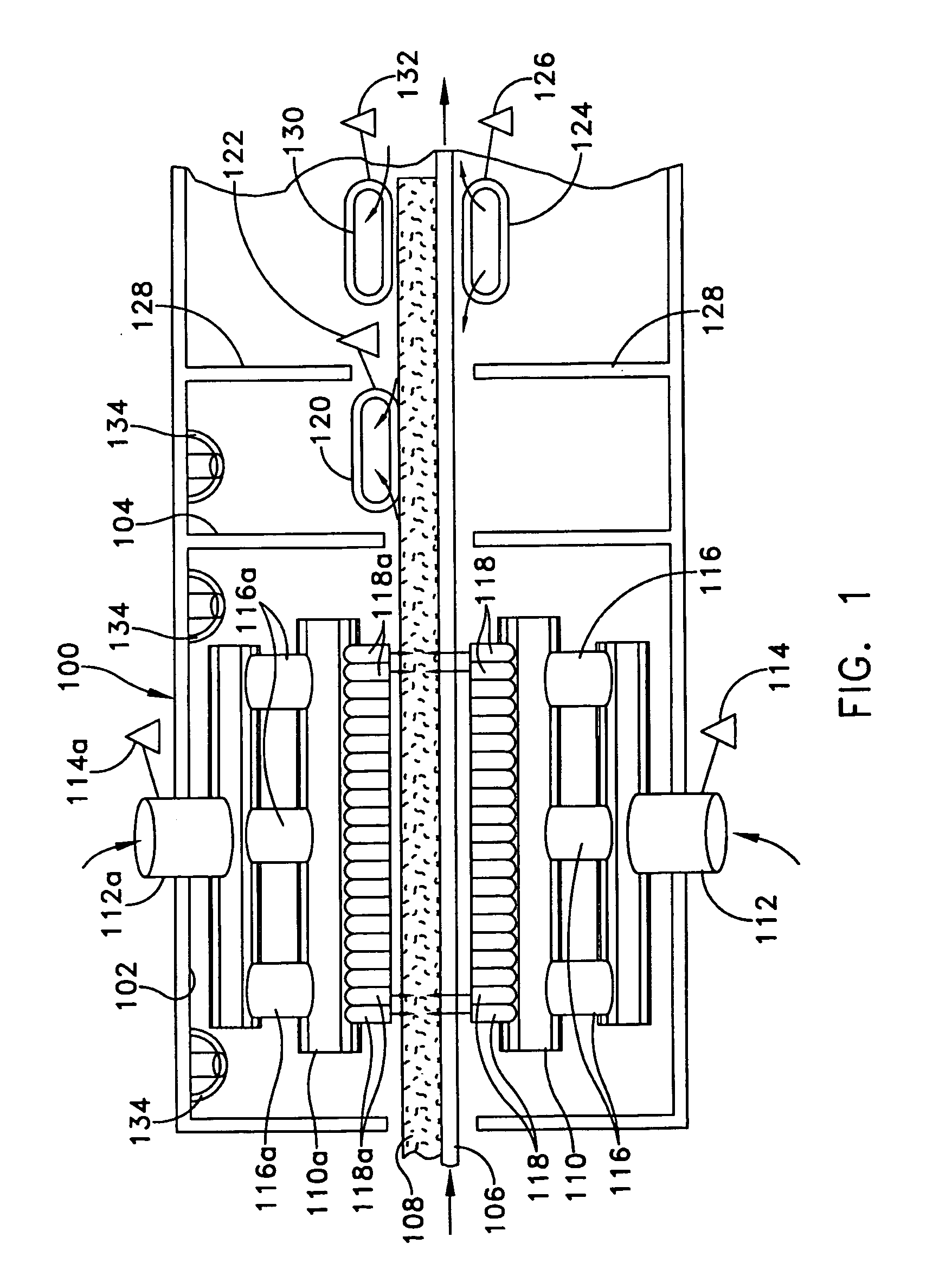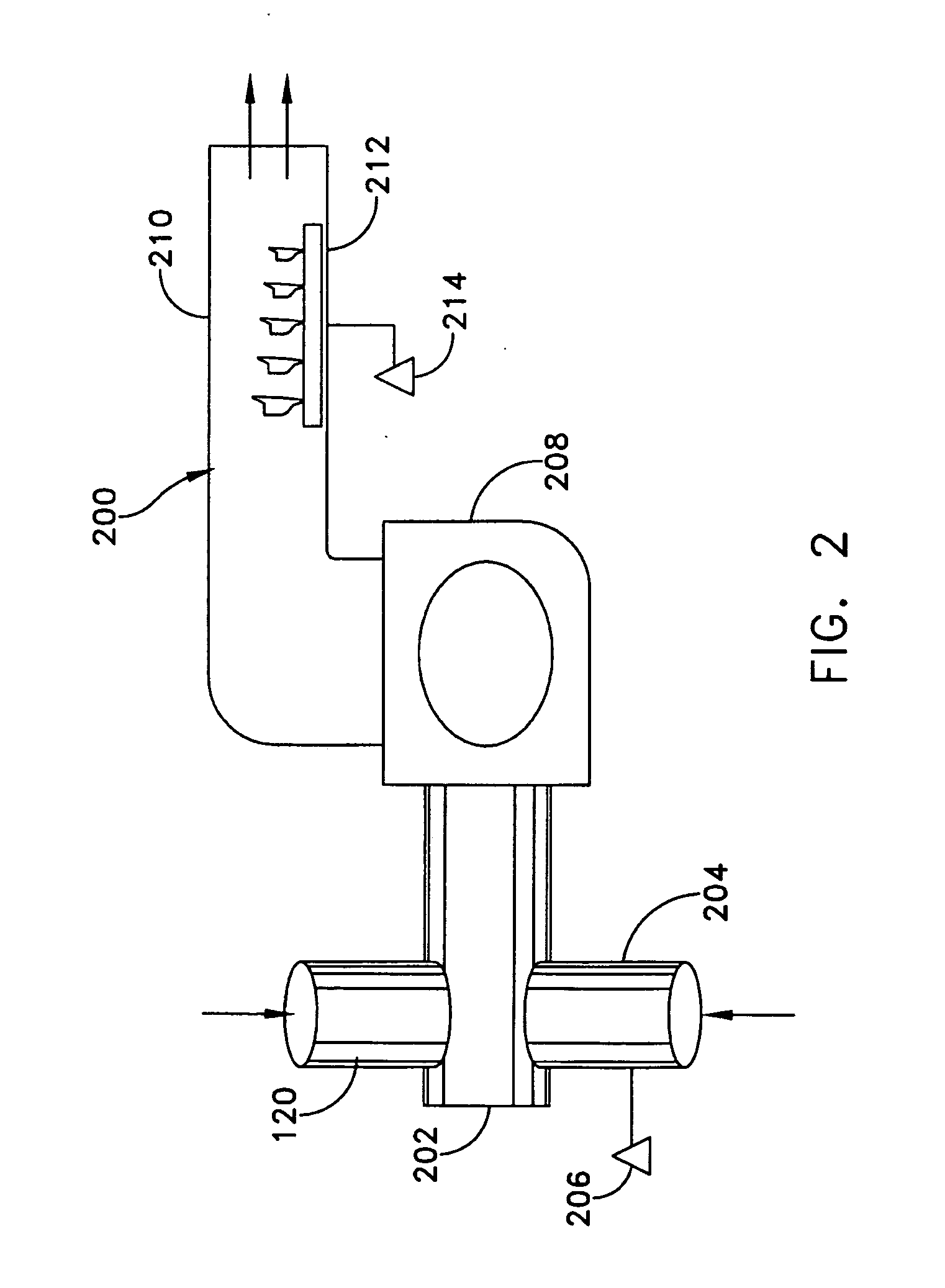Method for curing a binder on insulation fibers
a technology of fibrous insulation and curing method, which is applied in the direction of thin material processing, transportation and packaging, textiles and papermaking, etc., can solve the problems of short-cut air flow path becoming hot spots, and achieve the effect of slow curing rate of the binder
- Summary
- Abstract
- Description
- Claims
- Application Information
AI Technical Summary
Benefits of technology
Problems solved by technology
Method used
Image
Examples
Embodiment Construction
[0017]FIG. 1 discloses a curing oven (100) having a heavily insulated heating zone chamber (102), and an adjacent, insulated cooling zone chamber (104). A combination of a heating zone chamber (102) and a cooling zone chamber (104) forms a single stage of the curing oven (100). A continuous moving conveyor (106) supports a fibrous insulation (108) formed by a mass of numerous insulation fibers that are assembled on the conveyor (106). A binder is dispersed among the insulation fibers, and the insulation fibers are assembled on the conveyor (106) to form a lofted fibrous insulation (108).
[0018]FIG. 3 discloses another embodiment of the fibrous insulation (108). A continuous web of glass fiber non-woven facing layer (300) may be dispensed from a roll (302) and is applied to at least one of the two major sides of the fibrous insulation (108) before the fibrous insulation (108) enters the curing oven (100). The facing layer (300) is a flexible sheet or film that is attached to, and cov...
PUM
| Property | Measurement | Unit |
|---|---|---|
| density | aaaaa | aaaaa |
| density | aaaaa | aaaaa |
| thickness | aaaaa | aaaaa |
Abstract
Description
Claims
Application Information
 Login to View More
Login to View More - R&D
- Intellectual Property
- Life Sciences
- Materials
- Tech Scout
- Unparalleled Data Quality
- Higher Quality Content
- 60% Fewer Hallucinations
Browse by: Latest US Patents, China's latest patents, Technical Efficacy Thesaurus, Application Domain, Technology Topic, Popular Technical Reports.
© 2025 PatSnap. All rights reserved.Legal|Privacy policy|Modern Slavery Act Transparency Statement|Sitemap|About US| Contact US: help@patsnap.com



